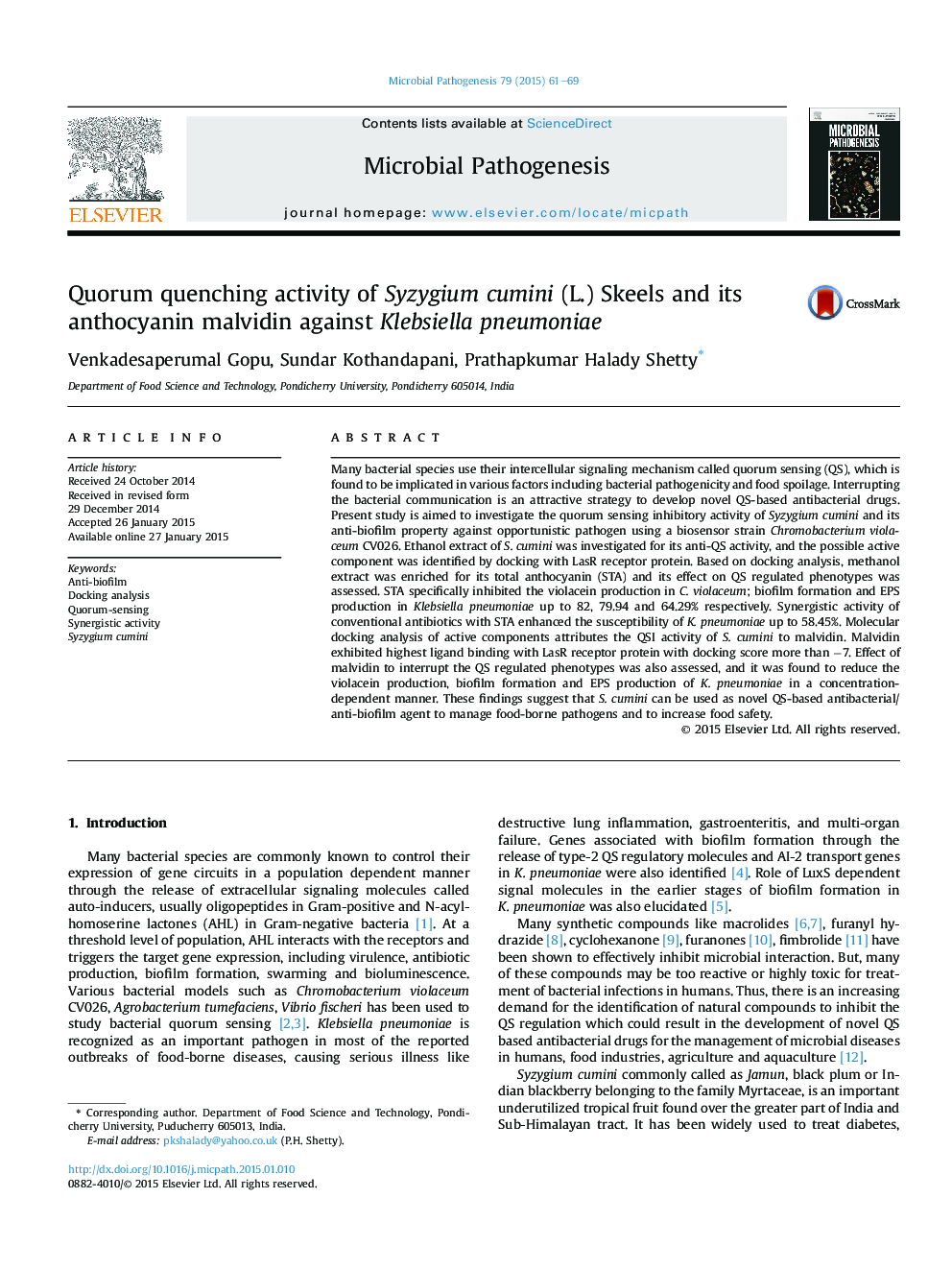| کد مقاله | کد نشریه | سال انتشار | مقاله انگلیسی | نسخه تمام متن |
|---|---|---|---|---|
| 3416536 | 1593709 | 2015 | 9 صفحه PDF | دانلود رایگان |

• Anti-QS activity of Syzygium cumini was assessed against Klebsiella pneumoniae.
• Possible active component(s) was identified by docking with LasR receptor protein.
• Enriched extract (STA) was assessed for its effect on QS regulated phenotypes.
• Molecular docking analysis attributes the QSI activity of S. cumini to malvidin.
• Malvidin reduced the violacein, EPS production and biofilm formation of K. pneumoniae.
Many bacterial species use their intercellular signaling mechanism called quorum sensing (QS), which is found to be implicated in various factors including bacterial pathogenicity and food spoilage. Interrupting the bacterial communication is an attractive strategy to develop novel QS-based antibacterial drugs. Present study is aimed to investigate the quorum sensing inhibitory activity of Syzygium cumini and its anti-biofilm property against opportunistic pathogen using a biosensor strain Chromobacterium violaceum CV026. Ethanol extract of S. cumini was investigated for its anti-QS activity, and the possible active component was identified by docking with LasR receptor protein. Based on docking analysis, methanol extract was enriched for its total anthocyanin (STA) and its effect on QS regulated phenotypes was assessed. STA specifically inhibited the violacein production in C. violaceum; biofilm formation and EPS production in Klebsiella pneumoniae up to 82, 79.94 and 64.29% respectively. Synergistic activity of conventional antibiotics with STA enhanced the susceptibility of K. pneumoniae up to 58.45%. Molecular docking analysis of active components attributes the QSI activity of S. cumini to malvidin. Malvidin exhibited highest ligand binding with LasR receptor protein with docking score more than −7. Effect of malvidin to interrupt the QS regulated phenotypes was also assessed, and it was found to reduce the violacein production, biofilm formation and EPS production of K. pneumoniae in a concentration-dependent manner. These findings suggest that S. cumini can be used as novel QS-based antibacterial/anti-biofilm agent to manage food-borne pathogens and to increase food safety.
Journal: Microbial Pathogenesis - Volume 79, February 2015, Pages 61–69